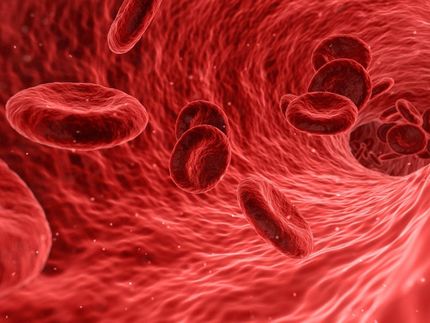Scientists map epigenetic changes during blood cell differentiation
Potential application for stem cell therapies
Advertisement
Having charted the occurrence of a common chemical change that takes place while stem cells decide their fates and progress from precursor to progeny, a Johns Hopkins-led team of scientists has produced the first-ever epigenetic landscape map for tissue differentiation. The details of this collaborative study between Johns Hopkins, Stanford and Harvard appear in Nature.
The researchers, using blood-forming stem cells from mice, focused their investigation specifically on an epigenetic mark known as methylation. This change is found in one of the building blocks of DNA, is remembered by a cell when it divides, and often is associated with turning off genes.
Employing a customized genome-wide methylation-profiling method dubbed CHARM (comprehensive high-throughput arrays for relative methylation), the team analyzed 4.6 million potentially methylated sites in a variety of blood cells from mice to see where DNA methylation changes occurred during the normal differentiation process. The team chose the blood cell system as its model because it's well-understood in terms of cellular development.
They looked at eight types of cells in various stages of commitment, including very early blood stem cells that had yet to differentiate into red and white blood cells. They also looked at cells that are more committed to differentiation: the precursors of the two major types of white blood cells, lymphocytes and myeloid cells. Finally, they looked at older cells that were close to their ultimate fates to get more complete pictures of the precursor-progeny relationships — for example, at white blood cells that had gone fairly far in T-cell lymphocyte development. (Lymphoid and myeloid constitute the two major types of progenitor blood cells.)
"It wasn't a complete tree, but it was large portions of the tree, and different branches," says Andrew Feinberg, M.D., M.P.H., King Fahd Professor of Molecular Medicine and director of the Center for Epigenetics at Hopkins' Institute for Basic Biomedical Sciences.
"Genes themselves aren't going to tell us what's really responsible for the great diversity in cell types in a complex organism like ourselves," Feinberg says. "But I think epigenetics—and how it controls genes-can. That's why we wanted to know what was happening generally to the levels of DNA methylation as cells differentiate."
One of the surprising finds was how widely DNA methylation patterns vary in cells as they differentiate. "It wasn't a boring linear process," Feinberg says. "Instead, we saw these waves of change during the development of these cell types."
The data shows that when all is said and done, the lymphocytes had many more methylated genes than myeloid cells. However, on the way to becoming highly methylated, lymphocytes experience a huge wave of loss of DNA methylation early in development and then a regain of methylation. The myeloid cells, on the other hand, undergo a wave of increased methylation early in development and then erase that methylation later in development.
Rudimentary as it is, this first epigenetic landscape map has predictive power in the reverse direction, according to Feinberg. The team could tell which types of stem cells the blood cells had come from, because epigenetically those blood cells had not fully let go of their past; they had residual marks that were characteristic of their lineage.























































